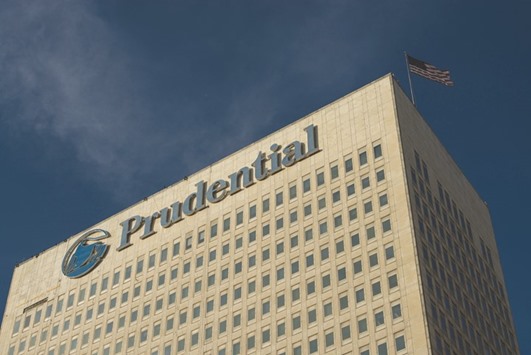Prudential Financial Chief Executive Officer John Strangfeld, who held firm as too-big-to-fail peers MetLife and American International Group shrunk through asset sales, is being rewarded by investors for his approach.
Strangfeld’s company, the second-largest US life insurer, has outperformed No 1 MetLife and AIG for months, and the gap widened after Donald Trump was elected president with a promise to dial back regulation.
Trump on Friday targeted the Dodd-Frank Act, which required regulators to identify non-bank companies that were so large that their failure could destabilise markets.
These systemically important financial institutions could eventually face tighter capital rules.
MetLife has announced plans to spin off a US retail operation, a move that will make Newark, New Jersey-based Prudential, with more than $800bn in assets, the nation’s top life insurer. AIG has announced deals to exit a mortgage guarantor, a broker-dealer unit and a Lloyd’s of London business.
Before Trump’s push, SIFI status “posed the most risk for Prudential, due to the higher asset leverage relative to MetLife and AIG,” Tom Gallagher, an analyst at Evercore Partners, said in a note on Friday. “MetLife already announced the breakup of the company.”
Strangfeld has been building Prudential for years. While he sold operations such as a securities unit and a commodities business, he pursued growth in insurance, buying Japan units from AIG in 2011 for more than $4.7bn and a life operation from Hartford Financial Services Group in 2013.
General Electric Co, which was named the fourth non-bank SIFI, exited that status after shedding assets. GE advanced 2 cents on Friday to $29.70, extending the share gain to about 3.6% in the past 12 months. MetLife CEO Steve Kandarian said it still made sense to exit the US retail business because of his focus on growth abroad and operations in his home market that generate better free cash flow, such as dental coverage or property-casualty policies.
He also sold an adviser network, as did AIG’s Peter Hancock.
“It’s a business we are not the best owner of,” Hancock said in January 2016 as the Department of Labor was crafting tighter regulations on the sale of retirement products to reduce conflicts of interest. “With the new DOL rules, that was a big factor in thinking whether this was better owned by somebody independent of us.”
Trump’s push this week to limit regulation also includes the DOL’s fiduciary rule. That helped insurers and asset managers like Voya Financial and Ameriprise Financial jump at least 2.8% in New York trading on Friday. Prudential had the luxury of not being in the forefront of public attention when regulators picked non-bank SIFIs.
AIG in 2008 required a federal bailout that swelled to $182.3bn, and was in little position to contest rules designed to stabilise the financial system. Beyond that, activists investors led by Carl Icahn urged Hancock in 2015 to slim down New York-based AIG, partly to remove the burden of federal oversight.
This was well before Trump, who counts Icahn as a supporter, was seen by many as having a realistic chance to become president.
MetLife, long the largest US life insurer, was out front in challenging regulation, going so far as to sue a panel that included the Treasury Department secretary and head of the Federal Reserve. A judge ruled in the company’s favour, but the government appealed when Barack Obama was still president. “We’re waiting to see what happens with MetLife’s case,” Prudential vice chairman Mark Grier said in December during a call discussing the outlook for 2017. “We’ll learn from the opinion and we’ll consider the right path.”
Prudential supports a review of the Dodd-Frank Act and the process for designating companies as SIFIs, Scot Hoffman, a spokesman for the insurer, said in an e-mail on Friday.
Representatives for AIG and New York-based MetLife had no immediate comment.
John Barnidge, an analyst at Sandler O’Neill & Partners, said that all of the biggest insurers can expect a reduction in expenses if regulators decide to apply SIFI regulations only to banks.
“They have about $100mn annually in costs for compliance,” he said. “Most of that will go away.”

Prudential Financial building is seen in Newark, New Jersey. The second-largest US life insurer has outperformed No 1 MetLife and AIG for months, and the gap widened after Donald Trump was elected president with a promise to dial back regulation.


